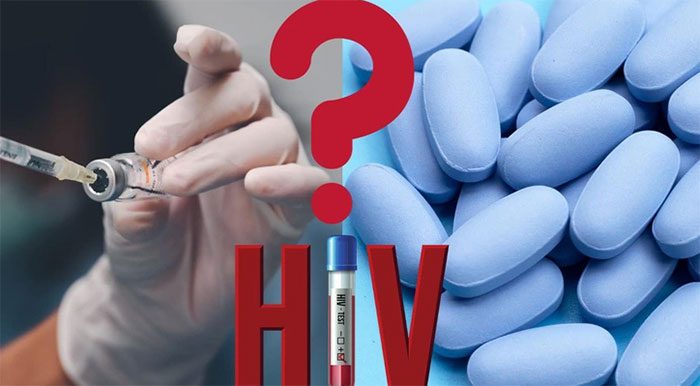This medication is designed to prevent the transmission of the human immunodeficiency virus (HIV) through sexual contact for adults and adolescents (aged at least 12 years) who weigh 35 kg or more.
The European Medicines Agency (EMA) has approved the circulation of the product containing cabotegravir from ViiV Healthcare (primarily owned by GSK). Currently, this is the first and only injectable medication approved for HIV prevention in the European Union.
This long-acting product containing cabotegravir has the advantage of requiring only six injections per year instead of taking a daily pill (365 pills per year) as before, significantly reducing the frequency of usage while maintaining its preventative efficacy and improving adherence.
Despite its effectiveness, organizations still recommend that individuals at high risk of HIV infection using products containing long-acting cabotegravir should practice safe sex.
To end the HIV pandemic, the most crucial aspect remains prevention.
Does the medication have side effects?
The primary side effects are reactions at the injection site, such as pain and redness, which can be alleviated by using pain relievers and applying ice.
Additionally, other reactions may include: fever, fatigue, headache, muscle pain, nausea, dizziness, rash, insomnia… or more severe reactions like allergies, depression, and mood changes. Most mild side effects can dissipate within a few days or weeks.

New injectable medication for HIV prevention.
When using this product, the user begins with a single injection of 600 mg (3 ml) and repeats this injection after one month. After the second injection, the recommended dosage continues as one 600 mg (3 ml) injection every two months.
The oral form of cabotegravir can be taken for about one month before starting the first injection to assess the drug’s tolerance.
The oral form has some side effects, such as nausea and diarrhea during the first month, but overall it is still considered safe. Currently, it cannot be determined whether the injectable or oral form of cabotegravir is better; it depends on the user’s choice in different circumstances.
For example, if someone is taking the oral form of cabotegravir but finds it inconvenient or forgets to take it, they can switch to this injectable form.
Who is at high risk of HIV infection and needs prevention?
- Men who have sex with men.
- Transgender women.
- Sex workers.
- People who inject drugs.
Partners of individuals with HIV who are not on antiretroviral therapy (ART) or those on ART but still have an HIV viral load above the detection threshold (over 200 copies/ml of blood).
Who should be cautious when considering the use of cabotegravir for HIV prevention?
- Individuals who are HIV positive.
- People with kidney or liver conditions.
- Those showing signs of acute HIV infection or at risk of recent HIV infection.
- Individuals weighing less than 35 kg.
- Individuals exposed to HIV within the past 72 hours.
Cabotegravir is essentially an antiviral medication, not a vaccine. Vaccines help the body produce long-term antibodies against diseases, while cabotegravir does not, so it must be taken regularly and at the correct dosage as prescribed.
It is important to note that no preventative measure is 100% effective; safe sexual practices, such as using condoms, remain essential to avoid complacency that could lead to serious consequences.


















































